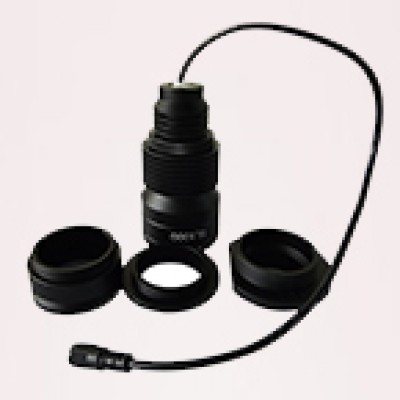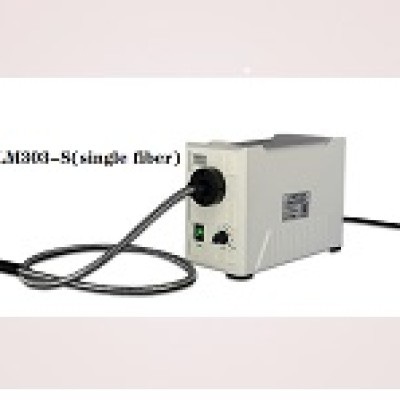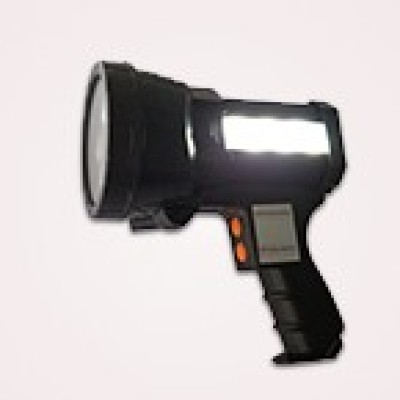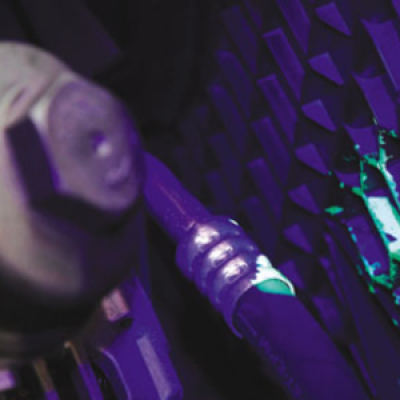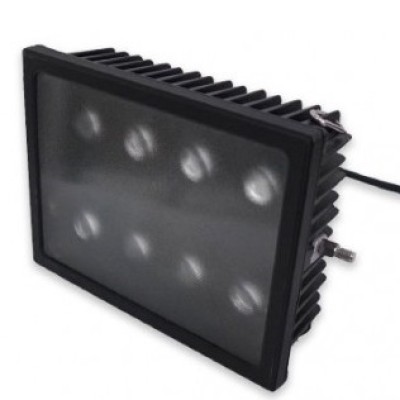Introduction
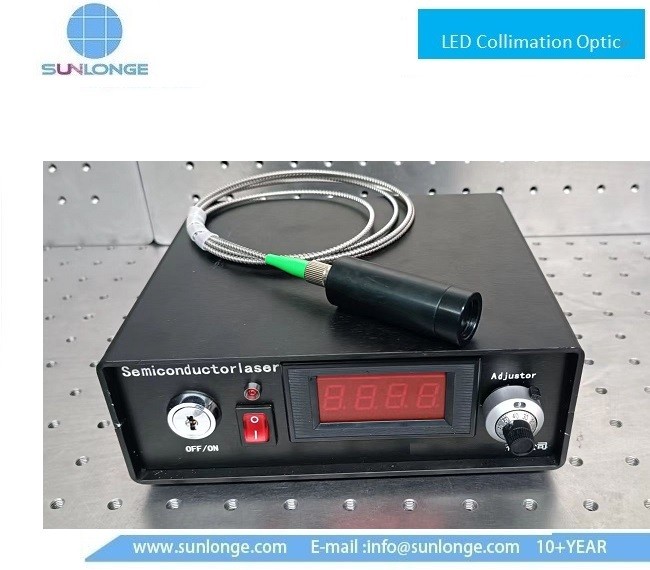
Fiber-coupled laser sources represent a revolutionary advancement in precision optical technology, fundamentally transforming how industries approach high-accuracy applications across semiconductor manufacturing, biomedical imaging, spectroscopy, and precision cutting. These sophisticated optical systems couple laser output directly into optical fibers, enabling controlled light delivery with exceptional beam quality, stability, and flexibility that traditional free-space lasers cannot match.
The global fiber-coupled laser market is experiencing remarkable growth, projected to expand from $1.2 billion in 2024 to $12.8 billion by 2033 at a compound annual growth rate (CAGR) of 10.8%. This explosive growth reflects increasing demand across diverse sectors where precision, reliability, and advanced manufacturing capabilities are paramount. The fiber-coupled diode laser module market specifically is expected to reach $2.5 billion by 2033 with a CAGR of 9.1%, demonstrating the technology’s critical role in modern industrial ecosystems.
From semiconductor fabrication facilities requiring ultra-precise wafer inspection to cutting-edge biomedical research laboratories utilizing photoacoustic microscopy, fiber-coupled laser sources have become indispensable tools. Their ability to deliver consistent, high-quality laser light through flexible fiber optic cables makes them ideal for applications requiring precise beam positioning, remote light delivery, and integration with complex optical systems.
Understanding Fiber-Coupled Laser Sources Technology
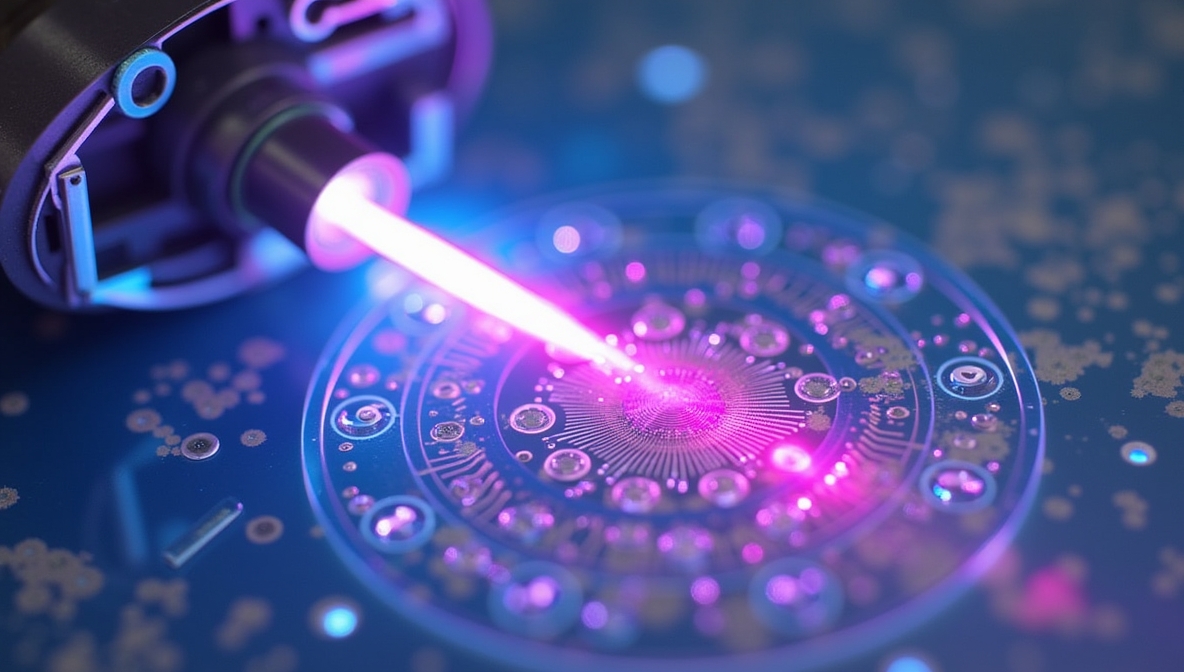
Fiber-coupled laser sources are sophisticated optical systems where laser output is precisely coupled into an optical fiber, typically single-mode or multimode, depending on application requirements. Unlike free-space lasers that require careful optical alignment and are susceptible to mechanical perturbations, fiber-coupled systems provide superior beam homogenization, circular intensity profiles, and enhanced system integration capabilities.
The fundamental architecture consists of a laser diode—whether Fabry-Pérot or distributed feedback (DFB)—whose output is carefully aligned and focused into an optical fiber. This coupling process requires sophisticated alignment techniques to maximize power transfer efficiency while maintaining beam quality. Single-mode fiber-coupled lasers utilize cores of approximately 6-9 μm diameter and can achieve output powers from hundreds of milliwatts to over 1.5 watts. Multimode fiber-coupled systems employ larger core diameters (100-1000 μm) and can deliver significantly higher power levels, reaching kilowatt ranges for industrial processing applications.
The technical advantages of fiber-coupled laser sources are substantial. They eliminate the need for complex free-space optical alignment, providing misalignment-free operation that is largely immune to mechanical vibrations and environmental perturbations. The fiber delivery system enables flexible positioning and remote placement of laser sources away from sensitive experimental or manufacturing environments. Beam quality is consistently maintained throughout the fiber, with modern systems achieving M² values below 1.2, ensuring superior focusing capabilities and spatial resolution.
Wavelength options span from ultraviolet (405 nm) through visible (488-660 nm) to near-infrared (785-980 nm) ranges, with customization available to match specific material absorption characteristics or fluorophore excitation requirements. Power stability is exceptional, with variations typically below 1-2%, critical for applications requiring consistent measurement results or process repeatability. Advanced systems incorporate temperature control through thermoelectric coolers (TECs), wavelength stabilization using fiber Bragg gratings, and modulation capabilities up to 100 kHz.
Semiconductor Manufacturing Applications
Semiconductor manufacturing represents one of the most demanding and critical applications for fiber-coupled laser sources and advanced UV LED lamp technology. As chip architectures become increasingly complex with features shrinking to nanometer scales, the precision requirements for wafer inspection and quality control have reached unprecedented levels. The integration of fiber-coupled laser sources and UV LED lamps has become essential for maintaining yield and ensuring product reliability.
Wafer Inspection with UV LED Technology
UV wafer inspection lamps, particularly those utilizing LED technology, have revolutionized defect detection in semiconductor fabrication. These lamps use ultraviolet light—typically in the UV-A range (365 nm)—to illuminate silicon wafers during production, revealing particles, cracks, and organic residues that are invisible under standard visible lighting. Under UV illumination, contaminants fluoresce against the wafer’s surface, creating high-contrast visualization that enables quality control teams to identify defects as small as 1 μm.
Modern UV LED inspection systems offer substantial advantages over traditional mercury vapor lamps. They provide instant-on capability with no warm-up period, enabling rapid integration into high-throughput manufacturing lines. The directed, monochromatic output at specific wavelengths (typically 365 nm) maximizes fluorescence detection while minimizing background interference. Unlike mercury lamps that generate significant heat and can damage sensitive wafers, UV LEDs operate at much cooler temperatures, protecting substrates during inspection.
Sunlonge’s SL8100 Wafer Inspection Advantage
The Sunlonge SL8100 wafer inspection lamp represents a breakthrough in UV LED technology for semiconductor applications. With an extraordinary illuminance capability reaching 400,000 lux at 30 cm distance, the SL8100 delivers the intensity required for detecting sub-micron defects while maintaining uniform illumination across entire wafer surfaces. This high-intensity output enables faster inspection cycles, critical for maintaining throughput in high-volume fabrication facilities.
The SL8100’s key technical advantages include an LED lifetime exceeding 30,000 hours—nearly 50% longer than competing systems—dramatically reducing maintenance downtime and replacement costs. The system provides adjustable, uniform UV illumination that can be precisely tuned to optimize contrast for different defect types and wafer materials. Unlike traditional mercury vapor lamps that contain hazardous materials and generate ozone, the SL8100 is environmentally friendly, mercury-free, and eliminates ozone production, creating safer working environments while meeting increasingly stringent environmental regulations.
The non-contact, non-destructive inspection capability ensures zero contamination risk during analysis, essential for maintaining wafer cleanliness through subsequent processing steps. Real-time, inline inspection integration allows continuous monitoring vital for large-volume fabs, enabling immediate feedback and process adjustments that maximize yield and minimize defect propagation.
Biomedical Imaging and Microscopy
The biomedical imaging sector has embraced fiber-coupled laser sources as essential tools for advanced microscopy techniques that demand exceptional beam quality, wavelength flexibility, and stable output. Applications spanning photoacoustic microscopy, confocal laser scanning microscopy, and super-resolution imaging have been transformed by the integration of fiber-coupled laser technology.
Photoacoustic Microscopy (PAM)
Photoacoustic microscopy has emerged as a powerful noninvasive biomedical imaging technology capable of multiscale imaging from organs down to cellular structures. Fiber-coupled laser diodes serve as ideal excitation sources for PAM systems, offering compact form factors, high repetition rates, and wavelength tunability essential for functional imaging. The technology works by delivering short laser pulses through optical fibers to biological tissues, where absorbed light generates acoustic waves via thermal expansion. These ultrasound waves are detected and reconstructed into high-resolution images revealing vascular structures, oxygen saturation, and molecular composition.
Recent advancements in fiber-coupled laser diode-based PAM (FC-LD-PAM) systems have demonstrated dual-wavelength capabilities enabling high-resolution in vivo blood vessel imaging and accurate oxygen saturation mapping. By coupling laser diodes to multimode fibers and employing deep learning methods, researchers achieved lateral resolutions of approximately 7 μm, suitable for microvascular imaging in mouse models. The fiber delivery system simplifies alignment procedures, improves system compactness, and enhances flexibility compared to traditional bulk optic configurations.
Fiber laser technologies have further expanded PAM capabilities through development of tunable sources covering spectral ranges from 450 nm to 1100 nm. These widely tunable fiber-based master oscillator power amplifier (MOPA) systems enable multispectral photoacoustic imaging, allowing researchers to image oxygen saturation in blood vessels or visualize lipid-rich tissues by selecting appropriate wavelengths. The high pulse energy, high repetition rates (up to 1 MHz), controllable wavelengths, low noise, and excellent beam quality of fiber lasers make them particularly well-suited for photoacoustic applications.
Confocal and Super-Resolution Microscopy

Confocal laser scanning microscopy represents another critical application where fiber-coupled laser sources provide substantial benefits. Drug discovery and cell biology research rely heavily on confocal microscopy to understand living cell dynamics with superior depth resolution compared to wide-field microscopes. Fiber-coupled lasers offer excellent beam quality and stability along with sufficient power levels for confocal imaging, while providing designers the option to remotely locate laser sources away from the microscope platform.
The Sunlonge SCL3000 series fiber-coupled laser light sources are specifically designed for high-performance microscopy applications including confocal microscopy and super-resolution microscopy. These systems produce high-power, high-intensity illumination output through optical fiber patchcords, with customizable wavelengths from 405 nm to 980 nm and output power of 20-30 mW per channel. The single-mode polarization-maintaining fiber coupling ensures superior beam quality and polarization control critical for advanced imaging techniques.
Key advantages of the SCL3000 series include highly integrated design with control and heat dissipation components fully integrated into compact housings (186 × 160 × 63 mm). The stable output performance and customizable wavelength options make these sources ideal for multi-color fluorescence imaging and spectroscopic applications. Manual intensity control via knob (10-100%) or remote modulation capabilities enable precise power adjustment for different samples and imaging modes.
Super-resolution microscopy techniques such as stimulated emission depletion (STED) microscopy have also benefited from fiber-coupled laser integration. Fiber STED microscopes achieve resolutions below 120 nm—more than twice the improvement over confocal modality—while maintaining the flexibility and robustness of fiber delivery. The fiber coupling enables development of compact, potentially portable super-resolution systems suitable for clinical translation and in vivo imaging applications.
Spectroscopy Applications
Fiber-coupled laser sources have become indispensable tools in spectroscopy, particularly for Raman spectroscopy, where narrow linewidth, wavelength stability, and precise power control are essential requirements. The integration of fiber-coupled lasers into spectroscopic systems provides significant advantages in terms of system flexibility, ease of integration, and measurement reproducibility.
Raman Spectroscopy
Raman spectroscopy is a non-destructive analytical technique that employs laser light to examine intermolecular bonds and molecular vibrations, yielding detailed insights into the composition and structure of gases, liquids, and solids. The technique finds applications ranging from pharmaceutical development and materials science to forensic analysis, food safety inspection, and environmental monitoring. Fiber-coupled Raman lasers are specifically engineered with narrow spectral linewidths (typically <0.1 nm) and wavelength stabilization to minimize background interference and maximize signal-to-noise ratios.
Common wavelengths for Raman spectroscopy include 532 nm (green), 638 nm, 785 nm, and 830 nm, each selected based on specific application requirements balancing fluorescence background, detector sensitivity, and sample compatibility. The 785 nm wavelength is particularly popular as it reduces fluorescence interference while maintaining good Raman scattering efficiency. Fiber-coupled configurations enable output powers ranging from 50 mW for portable field instruments to over 500 mW for research-grade benchtop systems.
The fiber coupling architecture provides several critical advantages for Raman spectroscopy systems. Remote laser placement eliminates vibrations and thermal fluctuations that could affect measurement stability. The fiber delivery enables flexible sample positioning and easy integration with various collection optics or probe configurations. However, fiber-coupled Raman systems require careful design to filter the Raman signal generated within the optical fiber itself, typically accomplished through specialized bandpass filters with transmission windows of 1-10 nm centered at the laser wavelength.
Advanced Spectroscopic Applications
Beyond Raman spectroscopy, fiber-coupled laser sources support diverse spectroscopic techniques. Laser-induced breakdown spectroscopy (LIBS) combined with Raman spectroscopy benefits from fiber coupling to enable depth profile analyses and multi-modal chemical characterization. The fiber delivery allows flexible positioning of sampling heads for industrial process monitoring or field measurements in challenging environments.
Flow cytometry represents another spectroscopy-adjacent application where fiber-coupled lasers excel. Multiple wavelengths (405 nm violet, 488 nm blue, 532 nm green, 561 nm yellow, and 635-670 nm red) are combined to excite different fluorescent markers attached to cells. The inherent power stability, low noise, and superior beam pointing stability of fiber-coupled laser modules ensure consistent fluorescence excitation as cells flow through the detection zone at high speeds. The ability to remotely locate lasers from the optical system improves overall system stability and reduces instrument footprint.
Precision Cutting and Material Processing
The precision metal cutting and material processing industries have witnessed a transformative shift with the widespread adoption of fiber laser technology, which incorporates fiber-coupled semiconductor laser diodes as essential components. These applications demand high power density, excellent beam quality, and processing flexibility—requirements that fiber-coupled laser systems fulfill exceptionally well.
Fiber Laser Cutting Advantages
Fiber lasers utilize a solid-state gain medium and operate at wavelengths around 1.06-1.07 micrometers, which metals absorb highly efficiently. This results in faster and more precise cuts with significantly reduced energy consumption compared to traditional CO₂ laser systems. The fiber delivery architecture allows for tighter focusing of the laser beam, leading to higher power densities and increased cutting speeds. Fiber laser cutting systems routinely achieve tolerances of ±0.05 to 0.20 mm with minimal taper and heat-affected zones, producing edges that often require little or no secondary finishing.
The beam quality of fiber lasers is exceptional, often approaching diffraction-limited performance with extremely low divergence. This enables the generation of very small focal spot sizes essential for cutting intricate details and thin materials. Cutting speeds are 2-5 times faster than CO₂ lasers of comparable power, especially for thinner metals, dramatically increasing manufacturing throughput. Energy efficiency is substantially improved, with fiber lasers typically using 30-70% less energy than traditional UV curing or CO₂ systems, reducing both operational and cooling costs.
Manufacturing Efficiency and Flexibility
Strategic implementation of fiber laser cutting enables multiple designs to be cut from the same metal sheet with precision of ±0.0254 mm, supporting mid-level production volumes more efficiently than high-speed CNC machining or stamping. Material selection requires only parameter adjustments (speed, wattage, frequency, dwell time, laser passes) without additional tooling costs, providing exceptional manufacturing agility. This flexibility is particularly valuable for industries producing diverse product lines or custom components.
The reliability and low maintenance requirements of fiber-coupled diode laser modules contribute significantly to manufacturing efficiency. With no mirrors, sealed tubes, or gas refills required, fiber laser systems offer plug-and-cut simplicity. The compact, modular design facilitates easy integration into robotic arms or CNC systems for automated manufacturing lines, supporting Industry 4.0 initiatives and smart factory implementations.
Laser Welding and Cladding
Beyond cutting, fiber-coupled laser sources play crucial roles in laser welding and cladding applications. Laser welding using fiber-coupled semiconductor lasers provides high welding strength with smooth, flat welds requiring minimal post-processing. The uniform energy distribution characteristic of semiconductor lasers makes them particularly suitable for brazing applications, where consistent wire melting without spatter is essential.
Laser cladding improves wear and corrosion resistance of metal parts by depositing specialized coatings with metallurgical bonds to substrates. The fast cooling rates of laser cladding enable fine-grained structures and novel phases that cannot be obtained through equilibrium processes. Low heat input and minimal distortion—often within assembly tolerances—make laser cladding ideal for precision components. High-power fiber-coupled semiconductor lasers enable kilowatt-level output suitable for these demanding industrial processes.
Why Sunlonge’s UV LED Lamps Excel in Industrial Applications
When comparing UV LED technology to traditional UV lamp systems, the advantages of Sunlonge’s advanced UV LED products become immediately apparent across multiple performance dimensions critical to industrial applications. These advantages translate directly into improved operational efficiency, reduced costs, and enhanced product quality for manufacturers across semiconductor, electronics, printing, and inspection industries.
Superior Technical Performance
Sunlonge’s UV LED lamp systems deliver exceptional technical specifications that surpass traditional mercury vapor and arc lamp technologies. The SL8100 wafer inspection lampachieves an extraordinary 400,000 lux illuminance at 30 cm distance, providing the high-intensity output required for detecting sub-micron defects in semiconductor manufacturing. This intensity level exceeds standard UV LED systems by significant margins while maintaining uniform illumination crucial for consistent inspection results.
The wavelength precision of Sunlonge’s UV LED lamps represents another critical advantage. Unlike broad-spectrum mercury lamps that emit across multiple wavelengths including harmful ozone-generating UVC radiation below 280 nm, Sunlonge’s systems emit precise, monochromatic UV-A output (typically 365 nm). This targeted emission maximizes fluorescence detection efficiency while eliminating unnecessary wavelengths that contribute to substrate heating or ozone production.
Beam quality and uniformity distinguish Sunlonge’s products from competing solutions. The company’s proprietary optical design ensures even illumination distribution across the entire working area, eliminating hot spots or intensity variations that could lead to inconsistent inspection or curing results. This uniformity is essential for applications like wafer inspection where defect detection reliability depends on consistent illumination across entire surfaces.
Energy Efficiency and Operational Savings
The energy efficiency advantages of Sunlonge’s UV LED lamps deliver substantial operational cost savings. UV LED technology typically consumes 30-70% less energy compared to traditional mercury vapor UV lamps, directly reducing electricity costs. Unlike mercury lamps that require continuous operation due to warm-up requirements, UV LEDs offer instant-on/instant-off capability, enabling intermittent operation that further reduces energy consumption in applications with variable duty cycles.
The thermal management characteristics of UV LED technology provide additional benefits. Traditional UV lamps operate at temperatures exceeding 300°C, generating substantial infrared heat that can damage heat-sensitive substrates and requires extensive cooling infrastructure. Sunlonge’s UV LED lamps operate at significantly lower temperatures, virtually eliminating thermal stress on sensitive materials like thin wafers, flexible electronics, or heat-sensitive coatings. This cool operation reduces or eliminates cooling system requirements, saving additional energy and reducing equipment complexity.
Exceptional Longevity and Reliability
Perhaps the most compelling economic advantage of Sunlonge’s UV LED technology is its exceptional operational lifetime. The SL8100 system offers an LED lifetime exceeding 30,000 hours, compared to traditional mercury vapor lamps that typically last only 6,000-9,000 hours. This represents a 3-5 times improvement in operational life, dramatically reducing replacement frequency, maintenance downtime, and consumable costs.
UV LED systems from Sunlonge maintain stable output intensity throughout their operational life, unlike mercury lamps whose output degrades significantly as bulbs age. This consistent performance ensures reproducible inspection or curing results across the entire lamp lifetime, eliminating the need to compensate for intensity decay or perform frequent recalibrations. The ability to monitor and control LED intensity precisely further enhances process consistency and quality control.
The reliability benefits extend beyond just lamp lifetime. Sunlonge’s UV LED systems contain no fragile glass envelopes, filaments, or electrodes susceptible to shock and vibration damage. This rugged solid-state construction makes them ideal for industrial environments with mechanical vibrations or mobile/portable applications. The elimination of mercury and other hazardous materials simplifies disposal, reduces environmental impact, and addresses increasingly stringent regulations on mercury-containing devices.
Cost-Effectiveness and Total Cost of Ownership
While the initial capital cost of UV LED systems may be higher than traditional UV lamps, the total cost of ownership strongly favors Sunlonge’s LED technology. The combination of extended lifetime (3-5× longer), reduced energy consumption (30-70% savings), elimination of frequent lamp replacements, reduced cooling requirements, and minimal maintenance creates compelling economic advantages.
Downtime reduction represents an often-overlooked economic benefit. Traditional UV lamps require warm-up periods before reaching stable output, wasting production time during startup. Mercury lamps need periodic replacement during scheduled maintenance windows, interrupting production. Sunlonge’s instant-on UV LEDs eliminate warm-up delays, while the 30,000+ hour lifetime dramatically extends the interval between replacements, maximizing equipment uptime and production throughput.
The environmental and safety benefits of Sunlonge’s UV LED technology translate into additional cost savings. Mercury-free operation eliminates hazardous waste disposal costs and regulatory compliance burdens. The absence of ozone generation eliminates the need for exhaust systems and ozone monitoring equipment required with traditional UV lamps. These factors combine to create a compelling value proposition for manufacturers seeking to optimize both performance and operational economics.
Future Trends and Market Outlook
The fiber-coupled laser sources market is poised for exceptional growth driven by technological advancements, expanding applications, and increasing adoption across diverse industries. Market projections indicate robust expansion with the global fiber-coupled laser source market expected to grow from $1.2 billion in 2024 to $12.8 billion by 2033 at a CAGR of 10.8%, while the fiber-coupled diode laser module segment specifically is forecast to reach $2.5 billion by 2033with a CAGR of 9.1%.
Emerging Applications and Technology Advancements
Several key trends are shaping the future of fiber-coupled laser technology. The development of high-power fiber-coupled systems continues to push performance boundaries, with multi-kilowatt outputs now available for industrial processing applications. Advanced fiber coupling techniques that reduce losses and improve efficiency are enabling higher performance in precision applications. The integration of wavelength stabilization technologies, including volume Bragg gratings and temperature control systems, is enhancing the reliability and consistency required for demanding measurement applications.
The telecommunications sector is experiencing accelerated demand for fiber-coupled laser diodes driven by 5G network rollouts and expansion of broadband services to underserved areas. In medical applications, fiber-coupled lasers are enabling new minimally invasive procedures, advanced diagnostics, and therapeutic treatments with opportunities for continued growth in ophthalmology, dermatology, and oncology.
Defense and security applications represent another growth sector, with fiber-coupled laser modules essential for surveillance, targeting, and communication systems requiring improved power, range, and reliability. The miniaturization trend continues with development of more compact, lightweight modules suitable for portable devices, drones, and space applications.
Regional Market Dynamics
Geographically, Asia Pacific led by China, Japan, and India is anticipated to dominate market share due to strong manufacturing bases in electronics, rapidly expanding healthcare infrastructure, and significant investments in semiconductor fabrication capacity. North America and Europe remain significant markets driven by technological innovation, strong research and development investments, and early adoption of advanced manufacturing technologies.
The convergence of fiber-coupled laser technology with Industry 4.0 principles, artificial intelligence, and machine learning is creating intelligent laser systems with real-time performance monitoring, diagnostic capabilities, and automated optimization. These smart functionalities enable greater automation, predictive maintenance, and process optimization that will drive continued adoption across manufacturing sectors.
Key Information Summary Table
| Application Area | Key Benefits | Typical Wavelengths | Industries Served |
| Semiconductor Manufacturing | Sub-micron defect detection, non-destructive inspection, 400,000 lux output | 365 nm UV-A | Semiconductor fabs, chip manufacturing, photovoltaics |
| Biomedical Imaging | High-resolution microscopy, functional imaging, compact form factor | 405-980 nm customizable | Medical research, drug discovery, clinical diagnostics |
| Spectroscopy | Narrow linewidth <0.1nm, wavelength stability, low noise | 532, 638, 785, 830 nm | Pharmaceuticals, forensics, environmental, materials science |
| Precision Cutting | ±0.05-0.20mm tolerance, 2-5× faster speeds, 30-70% energy savings | 1060-1070 nm | Automotive, aerospace, electronics manufacturing |
| Flow Cytometry | Power stability <1%, remote placement, low beam wander | 405, 488, 532, 561, 635-670 nm | Biotechnology, medical diagnostics, research |
| UV LED Advantages | 30,000+ hour lifetime, instant-on, mercury-free, 3-5× longer life | 365 nm UV-A | All UV inspection and curing applications |
Q&A: Fiber-Coupled Laser Sources in Industrial Applications
Q1: What are the main advantages of fiber-coupled laser sources over free-space laser systems?
A: Fiber-coupled laser sources offer several critical advantages over traditional free-space systems. They provide superior beam homogenization and circular intensity profiles while eliminating complex optical alignment requirements. The fiber delivery enables flexible positioning and remote placement of laser sources away from sensitive experimental environments, reducing vibration and thermal interference. Fiber-coupled systems are largely immune to mechanical perturbations and misalignment, providing robust operation in industrial settings. Additionally, the compact form factor and ease of integration into existing systems make fiber-coupled lasers ideal for space-constrained applications and automated manufacturing environments.
Q2: How do Sunlonge’s UV LED lamps compare to traditional mercury vapor lamps for semiconductor wafer inspection?
A: Sunlonge’s UV LED inspection lamps, particularly the SL8100 model, offer substantial performance advantages over traditional mercury vapor lamps. The SL8100 achieves 400,000 lux illuminance with LED lifetimes exceeding 30,000 hours—approximately 3-5 times longer than mercury lamps (6,000-9,000 hours). UV LED technology provides instant-on capability with no warm-up period, enabling faster inspection cycles and intermittent operation that reduces energy consumption. Sunlonge’s systems are mercury-free and produce no ozone, creating safer working environments and simplifying regulatory compliance. The precise monochromatic output at 365 nm maximizes fluorescence detection while operating at much cooler temperatures, eliminating thermal damage risks to sensitive wafers.
Q3: What wavelengths are most commonly used for Raman spectroscopy applications with fiber-coupled lasers?
A: The most common wavelengths for Raman spectroscopy using fiber-coupled lasers are 532 nm (green), 638 nm (red), 785 nm, and 830 nm (near-infrared). The 785 nm wavelength is particularly popular because it significantly reduces fluorescence interference from samples while maintaining good Raman scattering efficiency and detector sensitivity. The 532 nm wavelength provides higher Raman scattering intensity due to the wavelength-dependent nature of Raman scattering, making it suitable for samples with minimal fluorescence background. Fiber-coupled Raman lasers are specifically engineered with narrow spectral linewidths typically below 0.1 nm and wavelength stabilization within 0.5 nm to minimize background interference and maximize signal-to-noise ratios.
Q4: What is the expected market growth for fiber-coupled laser sources through 2033?
A: The fiber-coupled laser market is experiencing robust growth across multiple segments. The overall fiber-coupled laser source market is projected to expand from $1.2 billion in 2024 to $12.8 billion by 2033, representing a CAGR of 10.8%. The fiber-coupled diode laser module segment specifically is expected to grow from $1.2 billion in 2024 to $2.5 billion by 2033 at a CAGR of 9.1%. Fiber-coupled laser diodes for all applications are projected to reach $2.6 billion by 2032with a CAGR of 9.5%. This growth is driven by expanding applications in telecommunications (5G networks), medical devices (minimally invasive procedures), industrial processing (precision cutting and welding), and defense systems.
Q5: What are the key technical specifications to consider when selecting a fiber-coupled laser source for confocal microscopy?
A: When selecting a fiber-coupled laser source for confocal microscopy, several critical specifications must be considered. Wavelength selection should match the absorption and emission spectra of fluorophores used in your samples, with common options including 405, 488, 532, 561, and 638 nm. Output power of 20-50 mW per wavelength is typically sufficient for most biological imaging applications. Power stability should be below 2% to ensure consistent fluorescence excitation across long imaging sessions. Beam quality with M² values below 1.2 ensures optimal focusing and spatial resolution. The fiber type should be single-mode for highest spatial resolution or multimode for higher power applications. Additional features like modulation capability (analog or TTL), wavelength stability, and compact integrated design enhance system performance and ease of integration.
Q6: How does fiber laser cutting compare to traditional CO₂ laser cutting in terms of efficiency and precision?
A: Fiber laser cutting offers significant advantages over CO₂ laser technology across multiple performance dimensions. Cutting speed is 2-5 times faster than CO₂ lasers of similar power, especially for thinner metals, dramatically improving manufacturing throughput. Precision and tolerances are superior, with fiber lasers routinely achieving ±0.05 to 0.20 mm accuracy with minimal taper and smaller heat-affected zones. Energy efficiency is substantially better, with fiber lasers consuming approximately 30-70% less energy than traditional systems. The beam qualityof fiber lasers is exceptional, with very low divergence producing extremely small focal spots ideal for cutting fine details. Operational costs are lower due to reduced energy consumption, elimination of consumable gas requirements, and minimal maintenance needs. The wavelength of fiber lasers (~1.06 μm) is highly absorbed by metals, providing more efficient cutting than the 10.6 μm wavelength of CO₂ lasers.
Q7: What makes Sunlonge’s SCL3000 fiber-coupled laser sources ideal for super-resolution microscopy applications?
A: The Sunlonge SCL3000 series offers several features that make it particularly well-suited for super-resolution microscopy techniques like STED, PALM, and STORM. The system provides high-power, high-intensity output of 20-30 mW per channel through optical fiber patchcords, sufficient for photoswitching and depletion processes required in super-resolution techniques. Customizable wavelength options from 405 nm to 980 nm enable selection of optimal excitation wavelengths for various fluorophores. The single-mode polarization-maintaining fiber couplingensures superior beam quality and polarization control critical for advanced imaging. The highly integrated design with control and heat dissipation fully integrated into compact housings (186 × 160 × 63 mm) simplifies system integration. Stable output performance with power control from 10-100% via manual knob or remote modulation enables precise intensity adjustment for different imaging modes. These specifications align well with requirements for confocal, super-resolution, and advanced fluorescence microscopy applications.
Conclusion

Fiber-coupled laser sources represent transformative technology driving precision, efficiency, and innovation across semiconductor manufacturing, biomedical imaging, spectroscopy, and material processing industries. The market’s projected growth from $1.2 billion in 2024 to $12.8 billion by 2033 underscores the critical role these systems play in modern industrial and research applications. From detecting sub-micron defects on semiconductor wafers to enabling breakthrough super-resolution microscopy and achieving unprecedented precision in metal cutting, fiber-coupled laser technology continues to push the boundaries of what’s possible.
Sunlonge’s advanced UV LED lamps and fiber-coupled laser sources exemplify the technical excellence and performance advantages that distinguish superior products in this competitive market. The SL8100 wafer inspection lamp’s extraordinary 400,000 lux output with 30,000+ hour LED lifetime, combined with the SCL3000 series’ customizable wavelengths and exceptional beam quality, position Sunlonge as a premier provider of precision optical solutions for demanding industrial applications.
For manufacturers and researchers seeking to enhance quality control, accelerate discovery, or improve manufacturing efficiency, investing in advanced fiber-coupled laser technology represents a strategic decision with substantial returns. Sunlonge’s mercury-free, energy-efficient UV LED solutions deliver not just superior technical performance but also significant operational cost savings, environmental benefits, and enhanced workplace safety.
Discover how Sunlonge’s cutting-edge fiber-coupled laser sources and UV LED lamps can transform your applications. Visit www.sunlonge.com to explore our complete product portfolio or contact our technical specialists to discuss customized solutions tailored to your specific requirements. Experience the Sunlonge advantage in precision, reliability, and innovation.
 CN
CN

